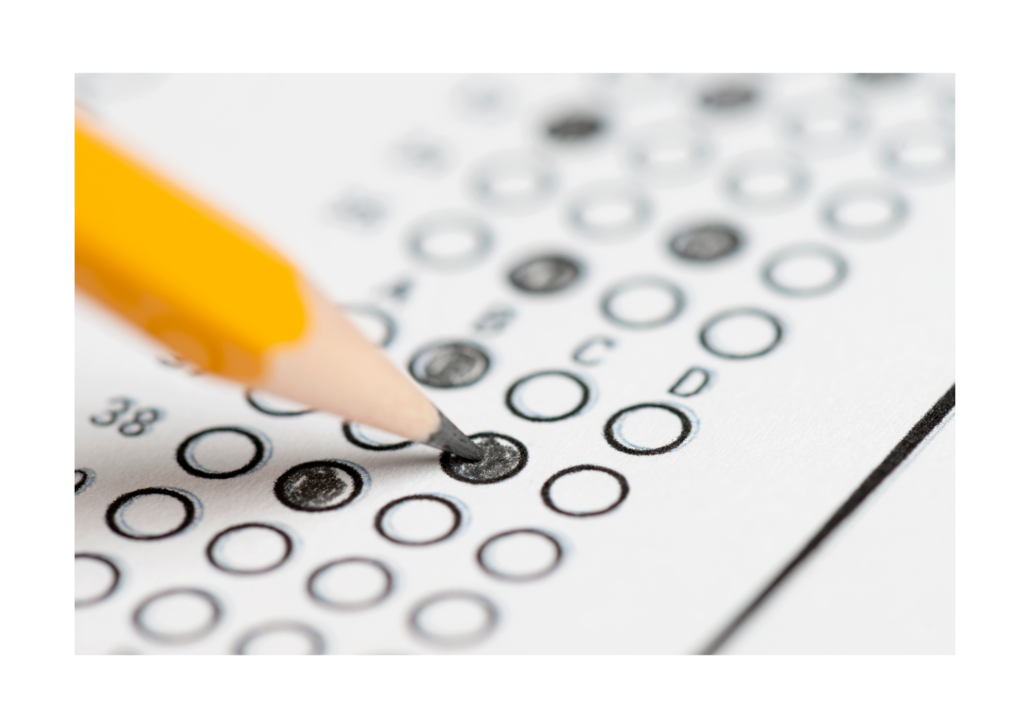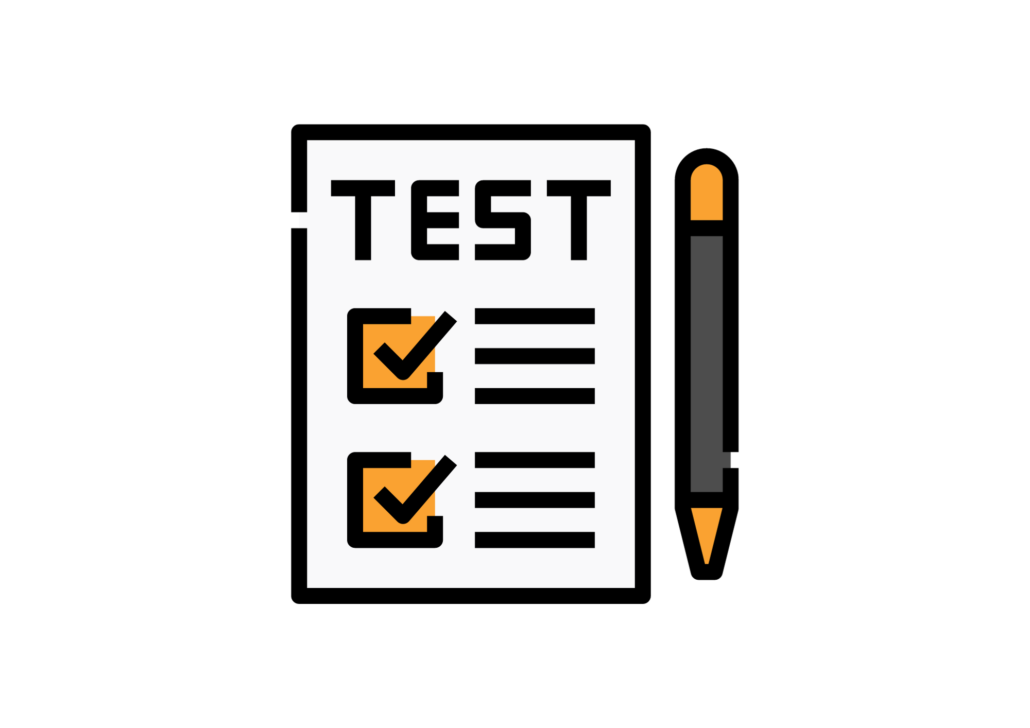
“This is so boring.”
“Just choose ‘C’ for every question and be done with it.”
“I just click answers; I don’t even read the questions.”
The above statements were common mutterings I heard during my first few years of teaching as I would pass out the multiple-choice questions and answer sheets. As an English Language Arts teacher, preparing my students for the same test style they would take as part of their End of Grading testing was important.
While there is value in reviewing best practices and testing strategies so that students are familiar with the test structure, too much multiple-choice testing leads to boredom, disengagement, and mindless clicking rather than measuring their level of proficiency in a certain standard.
One way to mitigate the problem of monotonous testing in the classroom is to offer testing choices! When students select how to demonstrate their knowledge from a choice board or testing menu, they can truly show you what they know in a way that plays to their strengths and helps them feel confident in their abilities.
The Case for Choice

Rather than force students to take routinized multiple-choice tests where their answers only range from the letter A to the letter D, teachers can offer students an assessment menu or choice board that provides a variety of ways that students can demonstrate their knowledge.
Here are just a few ideas of how you can transform your tests into engaging choices:
- Write an interview featuring your favorite character from a book
- Create a “mind map” of what a specific character thinks about daily
- Construct a monument of a historical figure that represents their accomplishments
- Write a postcard from an ancient civilization that shows your knowledge of society
- Design a science experiment that you would like to conduct
- Create a documentary trailer about a team that tracks weather patterns
- Create a budget for a week’s worth of meals
- Make a list of how you can use math outside of school
Here are three reasons why offering choice will enhance student learning:
- Strengths: Selecting the type of “test” they take allows students to play to their strengths. Is writing a challenge for a student, but illustrating is a skill of theirs? Students can show that they understood their science unit, for example, through a complex, labeled illustration of an eye diagram. Does a student struggle to stay focused on reading long passages? Perhaps constructing a shadow box showing how the Ancient Egyptians interacted with their geography can inform the teacher of a student’s learning progress.
- Engagement: When students review choices, consider strengths and interests, and decide on what type of assessment to complete, their brains are already more actively engaged than selecting answers A, B, C, or D on a multiple-choice test. The “buy-in” factor is strong – when students get to choose a learning opportunity for themselves, they are more invested in their learning. Additionally, the choices you offer them are likely more interesting than the standardized test structure!
- Deeper Levels of Thinking: Allowing students to engage in various assessment options takes their thinking deeper than simply eliminating answer choices or selecting the best option out of four. Based on the design of the assessment menu or choice board, students will likely need to utilize deeper levels of critical thinking to design, create, inquire, and activate deductive reasoning to complete their choice of assessment. This learning option, therefore, is automatically a valuable use of a student’s time.
Multiple Intelligences

Multiple-choice tests may inform you about a student’s knowledge of particular standards if they take them with fidelity. Still, they may provide skewed results if they are bored, skim through it, or struggle with reading comprehension. Providing students with a choice of assessment allows them to incorporate multiple intelligences into demonstrating their knowledge. Here are some examples of how multiple intelligences can be utilized in assessment choice:
Creativity: Do you see some students doodle as they learn? Add illustrations to their notes? If so, they may benefit from creative ways to show what they know. A student might show their knowledge of the geography of an ancient civilization, for example, by illustrating the landscape and depicting people interacting with the land. When offered creativity, students can and will exceed our expectations.
Gamification: Students enjoy fun, low-stakes, competitive games in the classroom, such as Kahoot, Quiziz, Quizlet, Blooket, and more. Sometimes, students enjoy flipping the script and creating the games themselves! My students have also enjoyed creating board games and card games that center around a topic. They most enjoy it when their classmates play the game! Creating questions and answer choices automatically sparks the skill of inquiry, and students tend to learn deeply when they have to research and review to generate questions.
Writing: Rather than selecting an answer, many students can best show what they know by writing about what they have learned. Students can do a “brain dump” where they jot down everything they know about a concept on a page and connect the ideas, they can write a traditional paragraph or essay, create a short story featuring a topic, develop a blog or newspaper article on a subject, or even sketch out a comic strip or poem! You will surely enjoy reading the variety of prose written about what you have taught!
Design: Many students enjoy designing infographics online, creating a new invention, or drawing out a blueprint for the next big app. There are many ways students can design an item that shows evidence of learning – all while bolstering skills that they can apply in and out of the classroom!
What about Grading?

Standard rubric: Grading up to sixteen different types of assessments may initially seem overwhelming, but not to worry. To address the curriculum standards you want to see in each test, create one overarching rubric that addresses expectations that apply to each choice. Using the same rubric will ensure equity in grading, save time, and create a seamless grading process for you as an educator.
Grading on standards: When grading various assessments, the best way to ensure that grading scales are fair to students and manageable for the grader is to assess whether a student still needs to learn, is proficient in, or has mastered a grade-level standard. Be specific in your rubric about which standard or standards are being assessed and what students need to do to show you that they understand it. Standards-based grading will help your students know what they need to learn and show you that they understand.
See Your Classroom Come Alive

Allow your students to impress you with their knowledge, skills, and creativity as you offer them choices in their assessments. Your classroom will come to life with inquiry, research, creation, design, and more. Most importantly, students will be proud of their work and engage in active learning that they can be proud of. They will be honing their skills even as they show you what they know!
F. A. Q.:
Q: Offering test choices seems to allow students to circumnavigate traditional reading and writing. Isn’t that what they need to learn in school to be successful?
A: Yes! Offering choices is not meant to be a substitute for reading and writing. Those skills are critical and should be continuously taught and assessed. However, you must ask yourself: are you grading a student’s reading ability? Or what they learned about a specific standard, such as how the religions of ancient cultures impacted how people lived? Additionally, many choices can involve reading and writing!
Q: Can the choice boards or menus be differentiated or scaled for students with IEPs?
A: Absolutely! You can offer choices that align with a student’s Individual Education Plan and/or grade their tests using a rubric that aligns with and supports their specific academic goals.
Q: How can I ensure my AIG students are challenged with choice boards or menus? What if they select easier options than they are capable of completing?
A: You can have your AIG students select from a special “Challenge” section of the choice board or menu or add an extension to their selection to provide them with the appropriate level of rigor.

